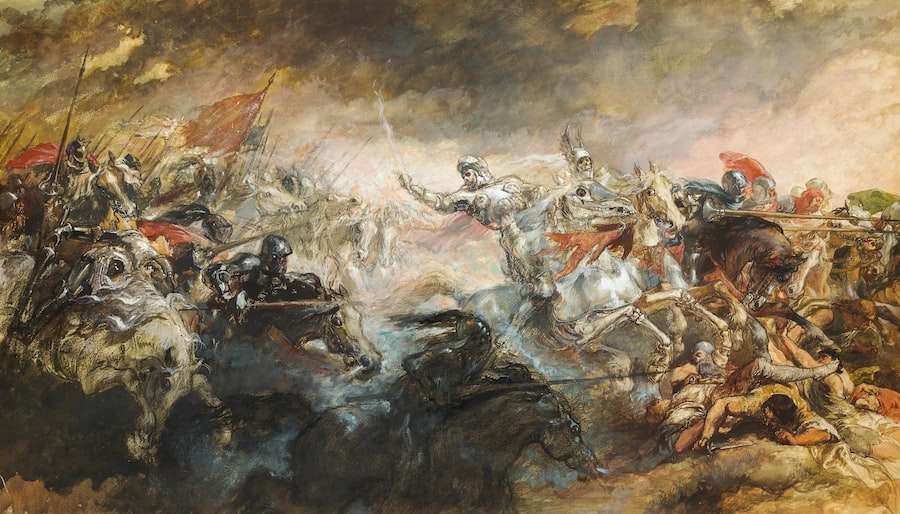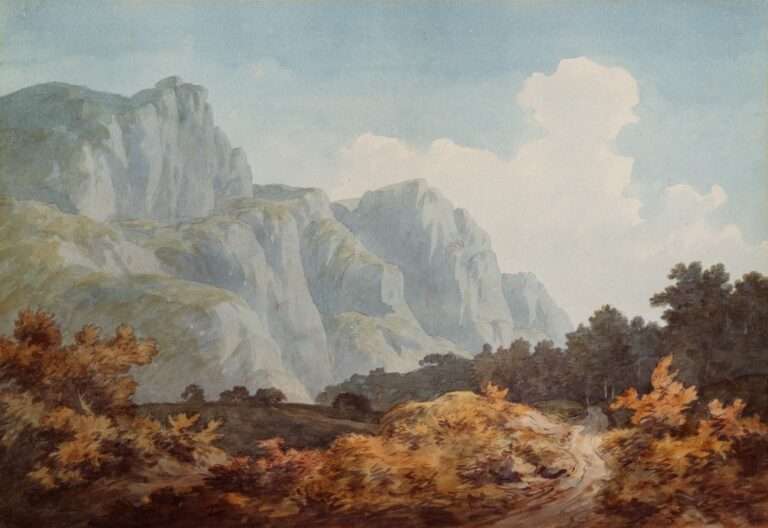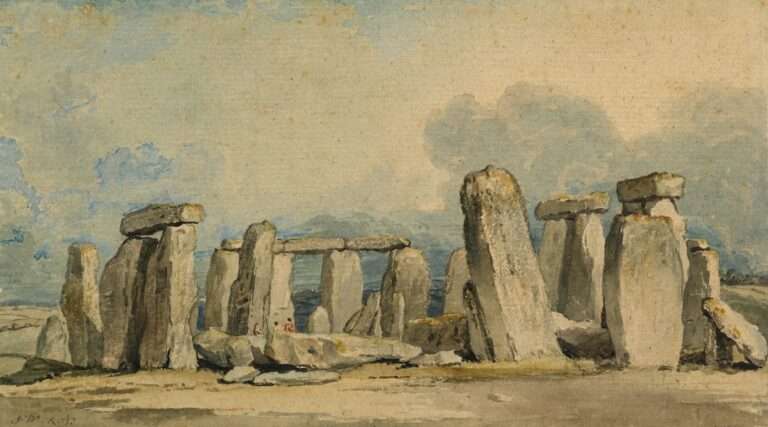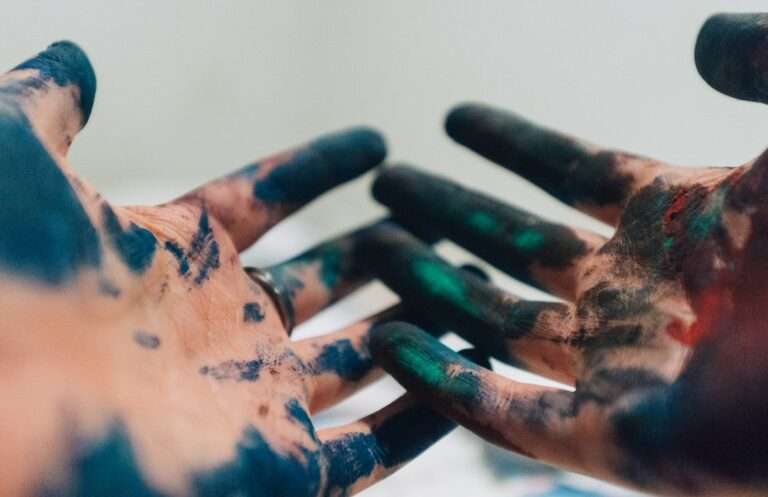Hidden Meanings Behind Graffiti Art Symbolism

Graffiti art has long been a form of expression and rebellion, often associated with urban environments and underground subcultures. It is a visual art form that uses public spaces as its canvas, creating colorful and intricate designs that can be both visually stunning and thought-provoking. Graffiti art is often misunderstood and dismissed as vandalism, but it holds deep symbolism and meaning for those who create it and those who appreciate it. In this article, we will explore the origins of graffiti art and its symbolism, as well as the various elements that contribute to its rich tapestry of meaning.
The Origins of Graffiti Art and Its Symbolism
Graffiti art has a long and storied history, dating back thousands of years. From the ancient cave paintings of Lascaux to the political murals of Northern Ireland, humans have been using public spaces to express themselves for centuries. However, modern graffiti art as we know it today can be traced back to the streets of New York City in the 1960s and 70s.
During this time, young artists began using spray paint to create elaborate tags and murals on subway trains and walls throughout the city. These early graffiti artists were primarily from marginalized communities, using their art as a form of rebellion against social and economic inequality. The symbolism behind their work was often rooted in their personal experiences and struggles, reflecting themes of identity, resistance, and empowerment.
Understanding the Significance of Graffiti Tagging
One of the most recognizable elements of graffiti art is tagging. Tagging refers to the act of writing one’s name or pseudonym in a stylized manner using spray paint or markers. While tagging may seem like a simple act of self-promotion or vandalism to some, it holds deep significance within graffiti culture.
Tagging serves as a way for graffiti artists to establish their presence in a particular area or community. It is a form of self-identification and a declaration of ownership over a space. Tagging also serves as a form of communication between graffiti artists, with different styles and techniques conveying messages and establishing hierarchies within the graffiti community.
Deciphering the Hidden Meanings of Graffiti Letters and Numbers
In addition to tagging, graffiti art often incorporates letters and numbers in its designs. These elements can hold hidden meanings and symbolism that may not be immediately apparent to the casual observer.
Graffiti letters are often stylized and distorted, creating a visual language that is unique to the graffiti subculture. Each artist develops their own signature style, using letterforms to convey their individuality and creativity. The choice of letters can also hold personal significance, with artists using their initials or other meaningful combinations.
Numbers are another common element in graffiti art, often used to represent dates or significant events. For example, the number 187 is commonly used in graffiti to represent murder, while the number 420 is associated with cannabis culture. These numbers can add layers of meaning to a piece of graffiti art, allowing the artist to convey a specific message or reference a particular event.
The Role of Color in Graffiti Art Symbolism
Color plays a crucial role in graffiti art symbolism, as it can evoke emotions and convey messages without the need for words. Different colors have different associations and can be used to create contrast, depth, and visual impact in graffiti art.
Black is often used as a base color in graffiti art, providing a stark contrast against the surrounding environment. It can symbolize rebellion, mystery, and power. Red is another commonly used color, representing passion, energy, and danger. Blue is often associated with calmness and tranquility, while yellow can symbolize happiness and optimism.
The combination of colors in graffiti art can also hold significance. For example, the use of red and black together may symbolize anger or aggression, while a combination of blue and green can represent harmony and balance. The choice of colors in graffiti art is a deliberate decision made by the artist, allowing them to convey their intended message and evoke specific emotions in the viewer.
The Use of Animals and Nature in Graffiti Art

Graffiti art often incorporates images of animals and elements from nature, adding another layer of symbolism to the artwork. Animals can represent various qualities and characteristics, serving as metaphors for human emotions and behaviors.
For example, a lion may symbolize strength and courage, while a bird can represent freedom and liberation. Snakes are often associated with deceit and danger, while butterflies are seen as symbols of transformation and rebirth. The choice of animal in graffiti art can reflect the artist’s personal connection to the animal or convey a specific message or theme.
Nature elements such as trees, flowers, and water are also commonly used in graffiti art. These elements can symbolize growth, renewal, and the cyclical nature of life. They can also represent the connection between humans and the natural world, highlighting the importance of environmental conservation and sustainability.
Political and Social Commentary in Graffiti Art
Graffiti art has long been used as a form of political and social commentary, allowing artists to express their opinions on various issues affecting society. From anti-establishment messages to calls for social justice, graffiti art has served as a powerful tool for marginalized communities to have their voices heard.
Political graffiti often takes the form of murals or large-scale pieces that cover entire walls or buildings. These pieces can depict political leaders, historical events, or symbols associated with a particular movement or cause. They can also incorporate text or slogans that convey a specific message or call to action.
Social commentary in graffiti art can take many forms, from humorous cartoons to poignant portraits. Artists may use their work to highlight social inequalities, challenge societal norms, or raise awareness about a particular issue. Graffiti art allows for a direct and immediate form of communication, bypassing traditional channels of media and reaching a wide audience.
Religious and Spiritual Themes in Graffiti Art
Religious and spiritual themes are also prevalent in graffiti art, reflecting the diverse beliefs and cultures of the artists. Graffiti art can incorporate symbols, icons, and imagery from various religious traditions, creating a visual representation of faith and spirituality.
For example, Christian graffiti art may feature crosses, angels, or biblical scenes, while Buddhist graffiti art may incorporate images of Buddha or lotus flowers. These religious symbols can hold deep personal meaning for the artist and serve as a form of self-expression and connection to their faith.
Graffiti art can also explore more abstract or universal spiritual themes, such as the search for meaning and purpose in life. Artists may use symbols such as stars, moons, or suns to represent the divine or the transcendent. These spiritual elements add depth and complexity to graffiti art, inviting viewers to contemplate their own beliefs and experiences.
The Influence of Pop Culture on Graffiti Art Symbolism
Pop culture has had a significant influence on graffiti art symbolism, with artists incorporating references to movies, music, and other forms of popular media into their work. Pop culture references can serve as a way for graffiti artists to connect with a broader audience and create a sense of familiarity and relatability.
For example, graffiti art may feature images of iconic movie characters or musicians, paying homage to their influence on popular culture. Artists may also incorporate lyrics or quotes from songs or movies into their work, adding another layer of meaning and depth.
Pop culture references in graffiti art can also be used to critique or challenge societal norms and values. Artists may subvert familiar images or symbols to convey a different message or perspective. By appropriating elements from popular culture, graffiti artists can engage with contemporary issues and spark conversations about the role of media and consumerism in society.
The Evolution of Graffiti Art Symbolism Over Time
Graffiti art symbolism has evolved and changed over time, reflecting the shifting cultural and social landscape. From its origins as a form of rebellion and self-expression, graffiti art has become more accepted and recognized as a legitimate art form.
Advancements in technology have also had a significant impact on graffiti art symbolism. With the rise of digital media and social networking platforms, graffiti artists can now reach a global audience and connect with other artists from around the world. This has led to the exchange of ideas, techniques, and styles, resulting in a more diverse and dynamic graffiti art scene.
The use of technology has also allowed for new forms of graffiti art, such as projection mapping and augmented reality. These innovative techniques blend digital elements with physical spaces, creating immersive and interactive experiences for viewers. The incorporation of technology into graffiti art symbolism opens up new possibilities for expression and pushes the boundaries of what is possible in this art form.
The Future of Graffiti Art and Its Symbolism in Society
The future of graffiti art is uncertain, as it continues to exist in a legal gray area in many places around the world. While some cities have embraced graffiti art as a form of cultural expression and have designated legal spaces for artists to create their work, others still view it as vandalism and actively work to remove or prevent it.
However, despite these challenges, graffiti art continues to thrive and evolve. Artists are finding new ways to create their work, whether through legal means or by adapting to the changing urban landscape. Graffiti art has also gained recognition in the mainstream art world, with galleries and museums showcasing the work of graffiti artists alongside more traditional forms of art.
The potential for graffiti art to continue to evolve and impact society is vast. As long as there are marginalized communities seeking a voice, there will be graffiti artists using their art to express their experiences and challenge the status quo. Graffiti art has the power to spark conversations, provoke thought, and inspire change, making it a vital and important form of artistic expression.
Graffiti art is a powerful and dynamic form of expression that holds deep symbolism and meaning. From its origins as a form of rebellion in the streets of New York City to its current status as a recognized art form, graffiti art has evolved and adapted to reflect the changing cultural and social landscape.
The symbolism in graffiti art is multi-layered and complex, incorporating elements such as tagging, letters and numbers, color, animals and nature, political and social commentary, religious and spiritual themes, pop culture references, and more. Each element adds depth and meaning to the artwork, allowing the artist to convey their intended message and evoke specific emotions in the viewer.
As graffiti art continues to evolve and impact society, it has the potential to challenge societal norms, raise awareness about important issues, and inspire change. By embracing graffiti art as a legitimate form of artistic expression and providing spaces for artists to create their work, society can foster creativity, diversity, and dialogue. Graffiti art is not just vandalism or a nuisance; it is a vibrant and vital part of our cultural landscape that deserves recognition and respect.
If you’re interested in exploring the symbolism behind graffiti art, you may also find the article on the symbolism of the moon fascinating. The moon has long been a powerful symbol in various cultures, representing femininity, intuition, and the cyclical nature of life. To delve deeper into this topic, check out the article on what does the moon symbolize. It provides a comprehensive exploration of the moon’s significance and its connection to human emotions and creativity.
FAQs
What is graffiti art?
Graffiti art is a form of visual art that involves creating images or writing on public surfaces such as walls, buildings, and streets using spray paint, markers, or other materials.
What is the symbolism in graffiti art?
The symbolism in graffiti art varies depending on the artist and their message. Some common symbols used in graffiti art include political and social commentary, cultural references, personal expression, and rebellion against authority.
Is graffiti art illegal?
Graffiti art is often considered illegal because it is done without permission on public or private property. However, some cities have designated areas where graffiti art is allowed and legal.
What are some famous graffiti artists?
Some famous graffiti artists include Banksy, Keith Haring, Jean-Michel Basquiat, and Shepard Fairey.
What is the difference between graffiti art and vandalism?
The difference between graffiti art and vandalism is that graffiti art is done with the intention of creating a message or artwork, while vandalism is done with the intention of causing damage or destruction to property. Graffiti art can be illegal if it is done without permission, while vandalism is always illegal.





